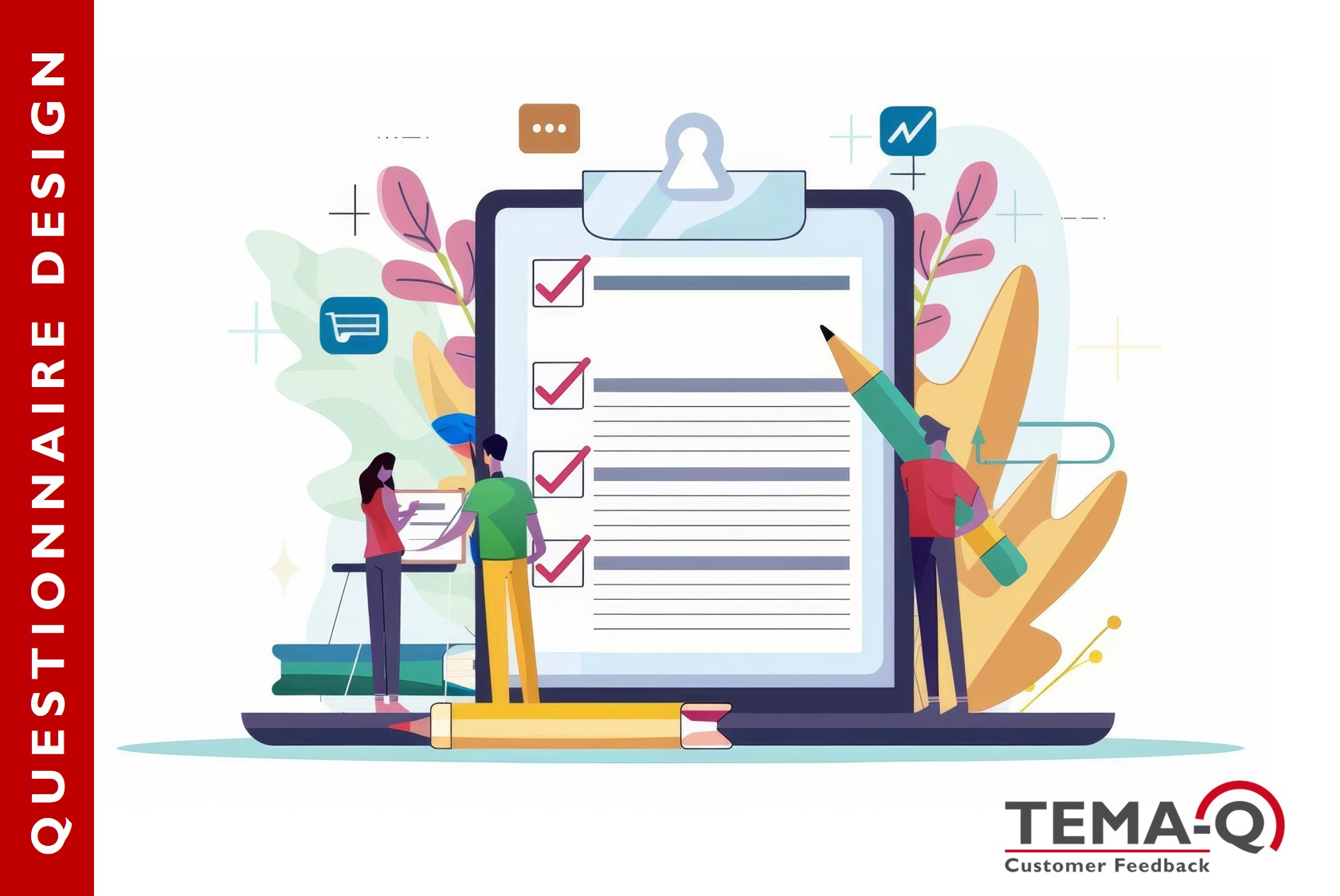The design of a questionnaire is a crucial factor in market research. If mistakes are made here, it can affect the quality of the collected data and, in the worst case, even distort the results.
Various aspects play a role in questionnaire design. First of all, there is the content design of the questionnaire. Questions should build on each other in such a way that a logical flow is created and aspects that are not to be asked about until later are not anticipated. The questions should always be aimed at the research objective and should not contain implicit questions that already indirectly suggest the answer or steer the respondent in a certain direction.
Another relevant aspect is the selection of suitable scales. These should have already been proven and should fit the subject of the study. Decisions, such as the number of scale points (even vs. odd) or the naming of verbalized scales, should be made consciously, taking into account all the associated advantages and disadvantages. (Keller, 2013)
The design of the questionnaire layout should not be neglected. If it is an online survey, the respondents themselves are directly confronted with the questionnaire. A user-friendly, responsive design is therefore essential. Font, font size, or even the color scheme help to ensure that all questions and answer options are legible. If the questionnaire is not designed to be responsive and therefore does not automatically adjust its width etc. depending on the device used, this can lead to parts of the questions or answer options not being perceived, which in turn can lead to a distortion of the results. If the frustration caused by an inadequate layout is too great, the result may be that the survey is abandoned. (Beuthner, Daikeler & Silber, 2019)
Layout design also plays an important role in telephone interviews or other types of surveys in which respondents do not see the questionnaire directly. If the aspects just mentioned cause interviewers to have problems with reading or seeing all of the answer options, this can also lead to distorted results.
The last aspect to be mentioned here is the length of the questionnaire. If a survey or filling out a questionnaire takes up too much time, there is an increased risk that respondents will abort prematurely and not answer the questions to the end. (Theobald et al., 2003)
In principle, measuring instruments, such as standardized questionnaires, should meet the three quality criteria of “objectivity”, “reliability” and “validity”. These quality criteria will be discussed in more detail in a separate article.
At TEMA-Q, we are happy to support you in designing your questionnaire. Our years of experience help us to avoid common mistakes and also to recognize hidden hurdles early on and adjust the design accordingly.
Take a look at our LinkedIn profile at https://www.linkedin.com/company/tema-q/ to gain exciting insights into the world of customer and employee experience in the future.
If you have any questions about these or other topics, or would like a live demo version of ClaralytiX via video conference, click here to make an appointment or contact us.
Keller, https://statistik-und-beratung.de/2013/02/wahl-der-skala-in-fragebogen/, 2013
Beuthner, Daikeler & Silber, Mixed-Device and Mobile Web Surveys, 2019, S.4
Theobald et al., Rücklaufquoten bei Online-Befragungen, 2003, S.204 ff.

